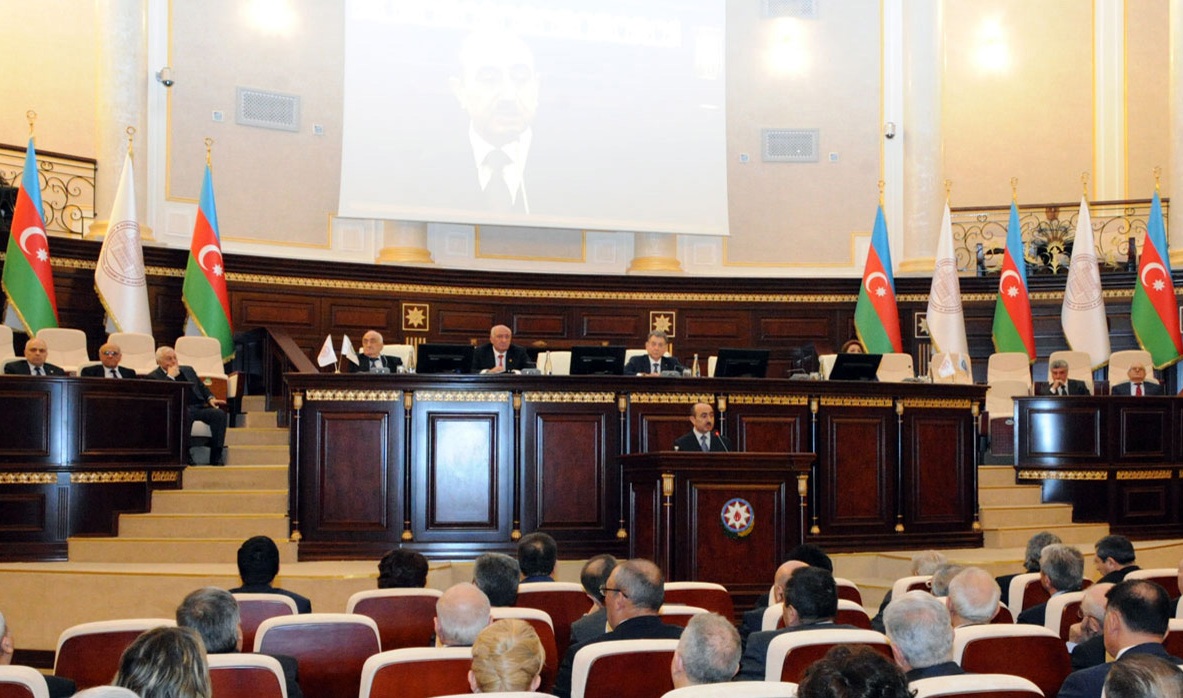Azerbaijan’s National Atlas presented in Baku

By Nigar Orujova
National Atlas of Azerbaijan, the first significant, large-scale publication of the country, was presented during a ceremony in Baku on February 2.
The event, organized by the State Committee for Land and Cartography and the Azerbaijan National Academy of Sciences, saw the presentation of the National Atlas and the South Caucasus map of 1903.
The editions were published upon the Presidential decrees dated April 20, 2011 and April 18, 2012.
Addressing the event, Akif Alizade, President of ANAS, and Garib Mammadov, Chairman of SCLC, noted the importance of the National Atlas.
At a time when Azerbaijan faces mapping frauds and information war against the country, the atlas can be a powerful response to the Armenians, Mammadov said.
Another important feature of the map is that it shows the Azerbaijani roots of the geographical names in the territory of Armenia. It also unveils the Turkic origin of the names of settlements of Yerevan province, he added.
National Atlas of Azerbaijan is a large database. It contains 19
sections on 444-pages, and includes significant data on numerous
fields, Alizadeh said.
"It contains information about the lands of Azerbaijan. The atlas
contains information about the history, education and industry. The
edition is the result of teamwork, and the team deserves much
credit," he added.
The head of the Academy further said that the map of the South Caucasus was created by the topographical department o the Military District of the South Caucasus in 1903.
Now it has been re-published and presented to the public, he added.
This map is a proper response to the Armenians, who put forward territorial claims against Azerbaijan, Alizadeh stressed.
"This map was drawn up in 1903 in Tsarist Russia. It proofs that the Armenian claims are unfounded," he highlighted.
The Nagorno-Karabakh conflict emerged in 1988 after Armenia’s territorial claims against Azerbaijan.
Armenia occupied over 20 percent of Azerbaijan's internationally recognized territory, including Nagorno-Karabakh and seven adjacent regions in the early 1990s. As a result of the military aggression of Armenia, over 20,000 Azerbaijanis were killed, 4,866 are reported missing and almost 100,000 were injured, and 50,000 were disabled.
Large-scale hostilities ended with a Russia-brokered ceasefire in 1994 but Armenia continued the occupation in defiance of four UN Security Council resolutions calling for immediate and unconditional withdrawal. Long-standing efforts by U.S., Russian and French mediators have been largely fruitless so far.
--
Nigar Orujova is AzerNews’s staff journalist, follow her on Twitter: @o_nigar
Follow us on Twitter @AzerNewsAz
